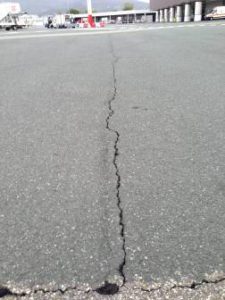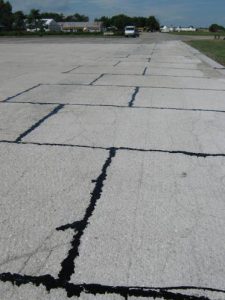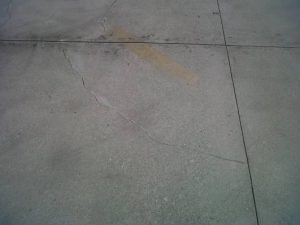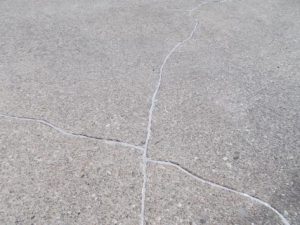Crack sealing is one of the most effective preventive maintenance of roads and airports pavements, which allows stopping the water infiltration inside the layers below the pavement surface. This type of maintenance avoids the deterioration of cracking that can develop in alligator crackings and potholes.
Crack sealing can made with two different materials:
– hot-applied modified bitumen sealant;
– cold-applied polyurethane sealant.
CRACK SEALING WITH “RODECO-CRAFCO®” TECHNOLOGY USING HOT-APPLIED MODIFIED BITUMEN SEALANT
This technique is used to fill longitudinal and transverse cracks, including joint reflection cracks from underlying PCC slabs and cracks & joints of concrete slabs. The primary purpose of crack sealing in AC pavement is to prevent surface water infiltration into the pavement foundation. It is more cost effective to use this technique as a preventative measure when the overall pavement condition is good or better.
The technique consists of the following steps:
Remove old sealant and form a sealant reservoir. Use a vertical spindle router or hand tools.

Remove the loose material along edges. The sealant reservoir depth should be at least the width of the crack plus 0.5 cm.
After routing, clean the crack using compressed air (do not sandblast). Vacuum or sweep up the debris.
Apply sealant. Do not overfill the crack; fill the cracks in order to create an overband if required.
 |
 |
 |
 |
The proposed sealing material offers high guarantees of durability over time, as well as against atmospheric agents, also against diluted or intermittent chemical aggressions by hydrocarbons (gasoline, diesel, kerosene) as well as high ability to adhere to the existing pavement.
CRACK SEALING ON PCC PAVEMENT USING COLD-APPLIED POLYURETHANE SEALANT
Crack sealing is the process of cleaning and sealing or resealing cracks in PCC pavement.
This technique is used to stop surface water infiltration into the pavement foundation and to stop the accumulation of debris in the cracks. Water infiltration results in weakened support and eventual pumping, corner breaks, and slab shattering. Accumulation of debris in cracks leads to spalling of the concrete and is a source of foreign object damage to aircraft engines.
The technique consists of the following steps:
Remove old sealant if previously filled. Route the crack using a vertical spindle router (do not use a rotary impact router as it spalls the concrete).
Different filling procedures are required based on crack width and amount of spalling for different classifications of cracks. The following procedures are recommended:
Hairline cracks with minor spalling: cut with an angle grinder, blow out and seal;
0.3 to 0.8 cm: if edges are rough,route and blow out before sealing;
Greater than 0.8 cm: route andconsider using a backer rod if too deep.
After routing, sandblast the crack, then airblow and vacuum. As a minimum, airblow debris away from the crack and sweep it up. Install a backer rod if required. Apply the proper primer and then the sealant from bottom to top of crack.
 |
 |
